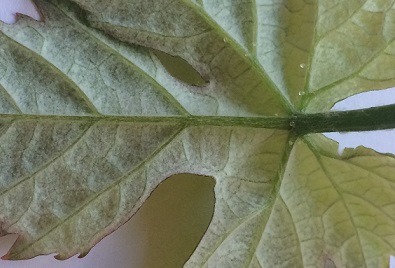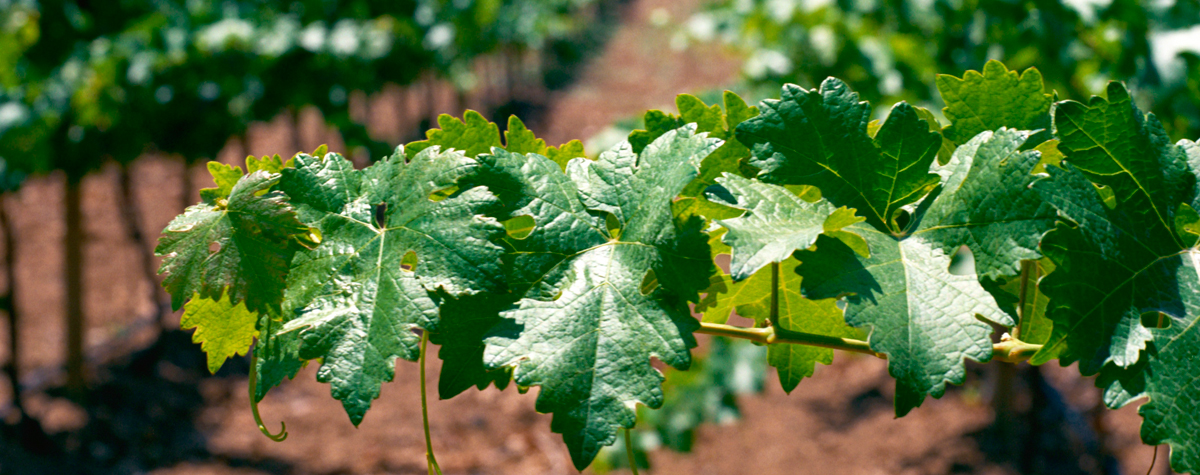‘Plant trichomes serve multiple beneficial roles – protection against insects and ultraviolet light and the reduction of transpiration. Trichomes also serve as a path of entry or host of plant pathogenic bacteria, fungi and viruses’Trichome density on upper and lower sides of grapevine leaves varies significantly between cultivars and is used in description and identification (ampelography).
Trichome characteristics affect plant-environment interactions and canopy spray application. As a result, Integrated Pest Management (IPM) demands a solid understanding of plant anatomy and plant-pathogen interactions.
Here is a study from the USA on the effects of trichomes and domata on Phytoseiids (biological control agents of pest mite species)…
Experimental and Applied Acarology: 2013: August 2013: Schmidt R A 2013: Leaf structures affect predatory mites (Acari- Phytoseiidae) and biological control - a review
Key findings: Trichomes affect retention and performance of predators and parasitoids. Trichomes increase Phytoseiid populations (demonstrated by a preference for hairy, pubescent shoots).
Here is a dissertation, also from the USA, looking at the genetic basis of trichome characteristics in resistant hybrid cultivars and predatory mite abundance…
Cornell University: 2015: Barba Burgos P 2015: Genetic Dissection Of Disease Resistance And Pest Related Traits In Hybrid Grapevine Families
Key findings: Increasing trichome density was associated with increased predatory mite populations.

Here is a new study from Brazil on the protective effects of high trichome density against Black spot (anthracnose) in Niagara Rosada leaves (albeit only on the hairy side)…
European Journal of Plant Pathology: 2019: Online March 2019: Valente Braga Z 2019: Histopathology of infection and colonisation of Elsinoe ampelina on grapevine leaves
Key findings: “Direct penetration occurred only on the adaxial leaf surface due to high trichome density on the abaxial leaf surface and conidia trapped on trichomes were frequently observed.”
'Genetically engineering for hairiness will have implications'However, recent research indicates that perhaps hairy is not always good and that genetically engineering for hairiness will have implications on disorder incidence for those pathogens preferring hairiness.
Here is a study shedding new light on what is going on up close to grapevine leaves in relation to bacterial, fungal and viral diseases…
European Journal of Plant Pathology: 2019: Online January 2019: Kim K W 2019: Plant trichomes as microbial habitats and infection sites
Key findings: Plant trichomes serve multiple beneficial roles – protection against insects and ultraviolet light and the reduction of transpiration. Trichomes also serve as a path of entry or host of plant pathogenic bacteria, fungi and viruses.
‘Cultivars with hairy lower leaf surfaces tend to be less susceptible to Downy mildew as inoculation occurs primarily on lower leaf surfaces’Hairiness also presents a challenge for the application of synthetic pesticides and biological pest control products, as this study from Austria points out…
Oeno One: 2016:50-4: Konlechner C 2016: Ultrastructural leaf features of grapevine cultivars (Vitis vinifera L. ssp. vinifera)
Key findings: Cultivars vary significantly in leaf hair density, the angle of contact for spray droplets (critical for adhesion of spray droplets, particularly fine droplets) also varied significantly, spray adjuvants play a role in penetration through leaf hairs.
In relation to spray application, the hairiness of the different cultivars in your vineyards should be taken into account and the following factors adjusted accordingly:
- Droplet size;
- Water volume;
- An adjuvant addition when the cultivar is particularly hairy.
James Wright is an international viticulture and management consultant and author of www.vitisynth.com and the newsletter VitiSynthesis.













.png)






